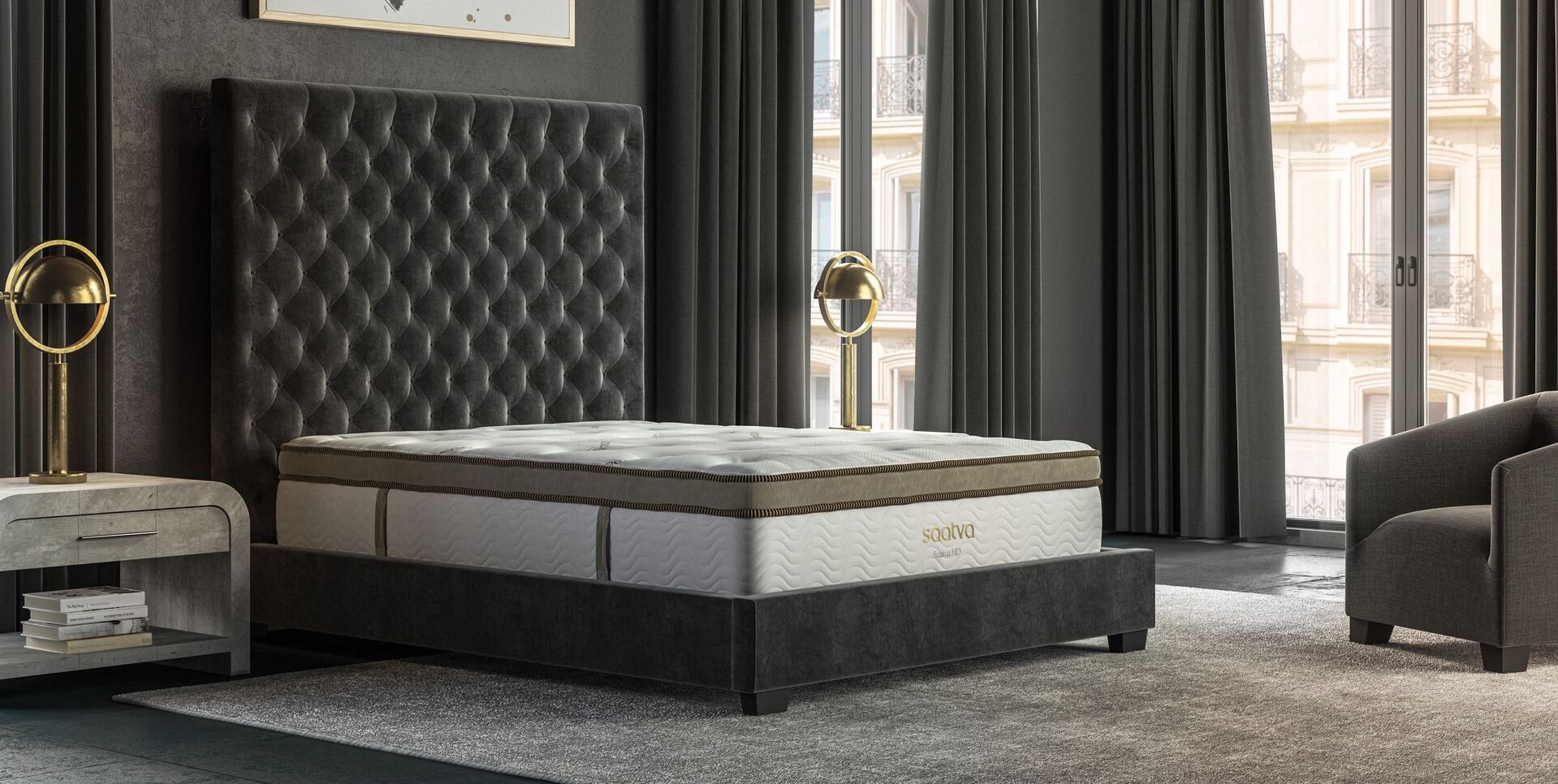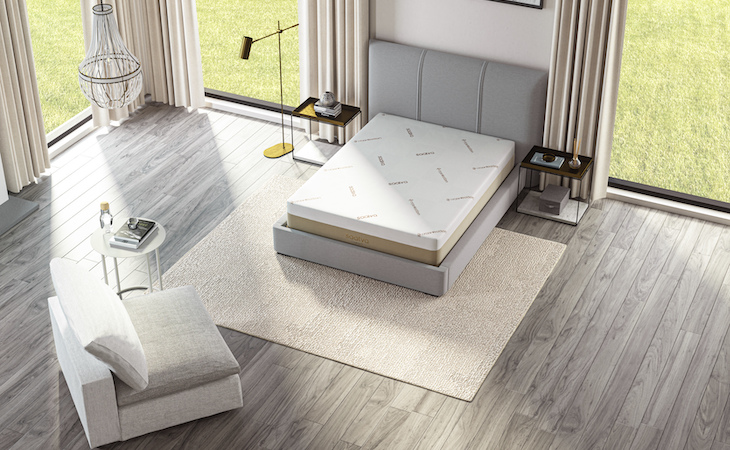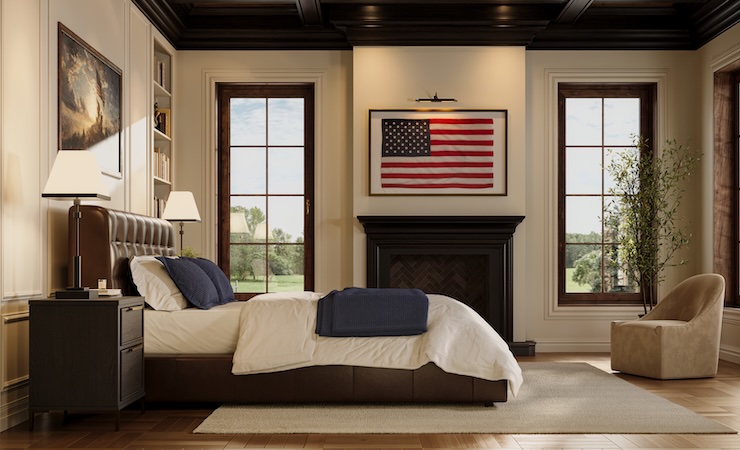Sleeping hot is one of the most common obstacles to getting quality sleep. This can particularly be a problem in the summer months, if you live in a hot climate year-round, or if you’re simply someone who tends to sleep hot.
The right mattress can go a long way toward keeping you cool while you snooze. Keep reading to find out what’s the best mattress for people who sleep hot, which type of mattress is best for summer, and what’s the best memory foam mattress for cooling. Plus, learn additional ways to stay cool at night.
Best mattress for overheating
Some mattresses are built in such a way that they’re naturally breathable, while others feature specially engineered cooling materials. Both are good options, so your choice will come down to personal preference. Here’s how to find a mattress that cools you down.
Innerspring mattress
In addition to the classic mattress feel,
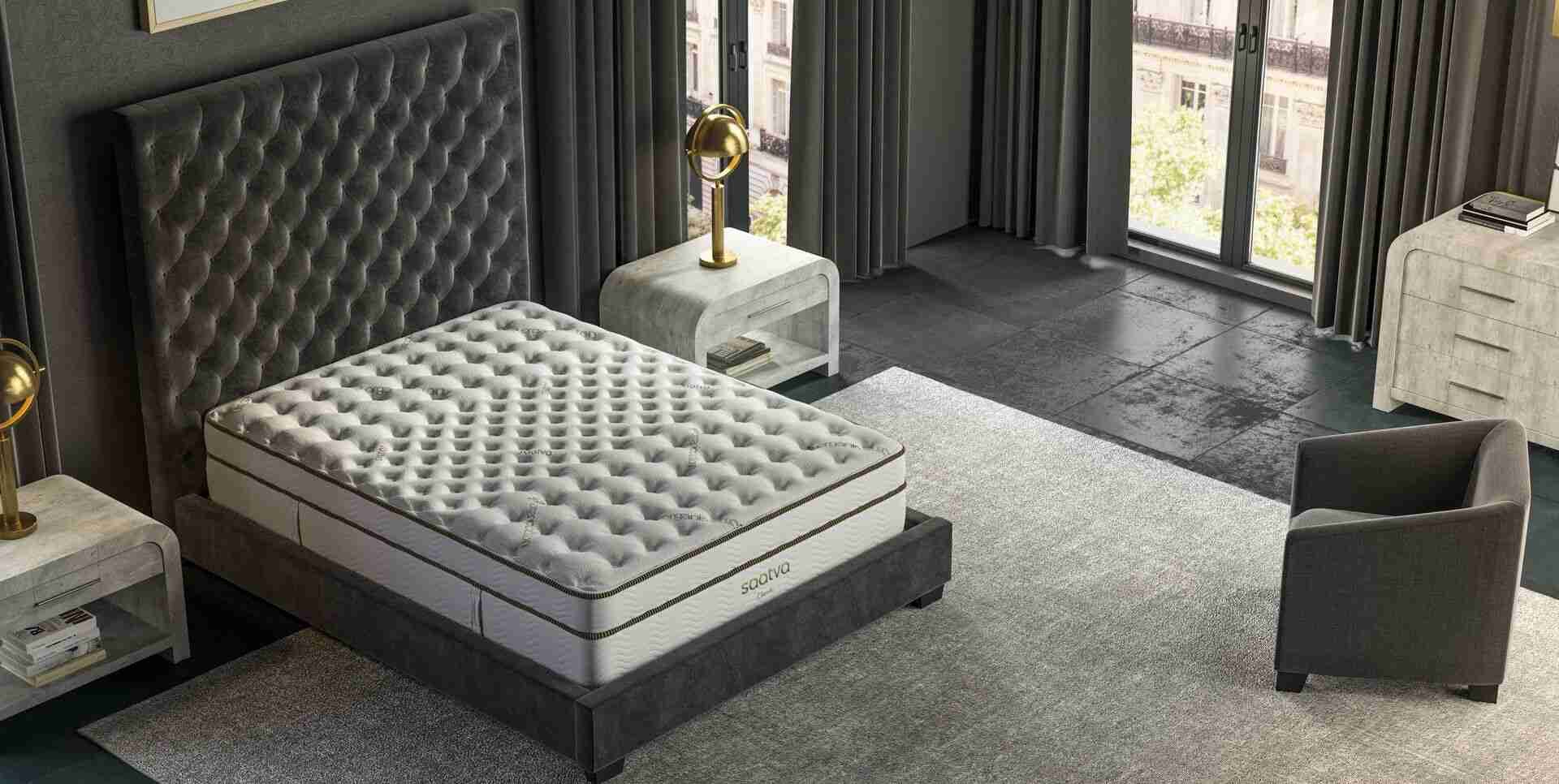
America’s best-selling online luxury innerspring
also provide excellent temperature control, as the space between coils allows plenty of air to circulate around a sleeper’s body.
Look for an innerspring mattress made with natural fibers such as wool and organic cotton for even more breathability.
Memory foam mattress
If you tend to sleep hot, you should be particularly careful when choosing a
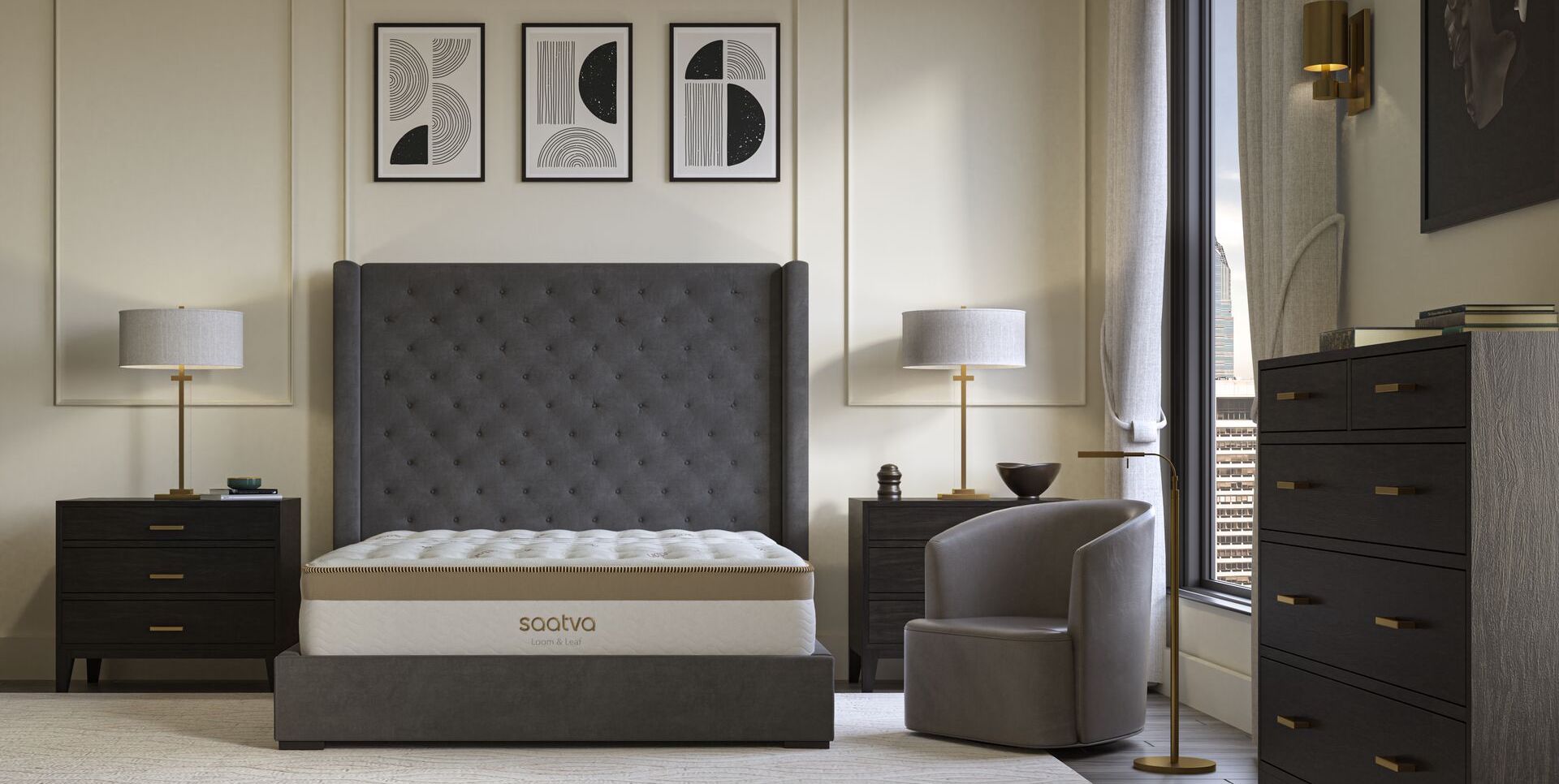
Our ultra-premium 5-lb memory foam mattress for a body-hugging feel
Traditional memory foam warms up in response to body heat, which is what allows it to soften and closely contour to your body shape—but it’s also a very dense material that traps body heat.
More recent generations of memory foam, especially those made with plant-based materials, are better at staying cool. Additionally, some types of memory foam are infused with cooling materials such as cooling gel or graphite that reduce its heat retention properties.
Both graphite and cooling gel can be mixed into the foam or applied as a thin layer on top of the mattress. If you prefer the body-hugging feel of a memory foam mattress, go for one that’s infused with one of these cooling agents, especially if you have a tendency to get hot at night.
Latex mattress
Latex, a natural material, has many of the contouring properties that memory foam is known for, but it doesn’t absorb as much heat or respond to temperature changes in the same way. That means it can be perfect for people who like the hugging feel of memory foam but tend to sleep hot. Made from the sap of rubber trees, latex has a naturally open cell structure that allows for excellent airflow.
A

Our dual-sided organic natural latex mattress for buoyant, pressure-relieving comfort
is also usually perforated with pinholes at regular intervals. The purpose of these pinholes is to fine-tune the firmness of the mattress, but they also serve to increase its breathability. In other words, latex mattresses are an excellent choice if you want to ensure a cool sleeping experience.
Not to mention that latex is naturally hypoallergenic, renewable, and free of harmful chemicals. Make sure to get a mattress made of 100% natural latex, as blended or synthetic latex will not have the same breathability.
Hybrid mattress
A

Our hand-tufted, organic natural latex hybrid innerspring for buoyant, cooling comfort
that layers foam and coils strategically can provide cool sleep. In a hybrid mattress, the coil base is topped with a comfort layer made of foam.
To ensure cool sleeping, look for a hybrid mattress infused with cooling materials, like gel or graphite copper, in the comfort layer.
Adjustable mattress
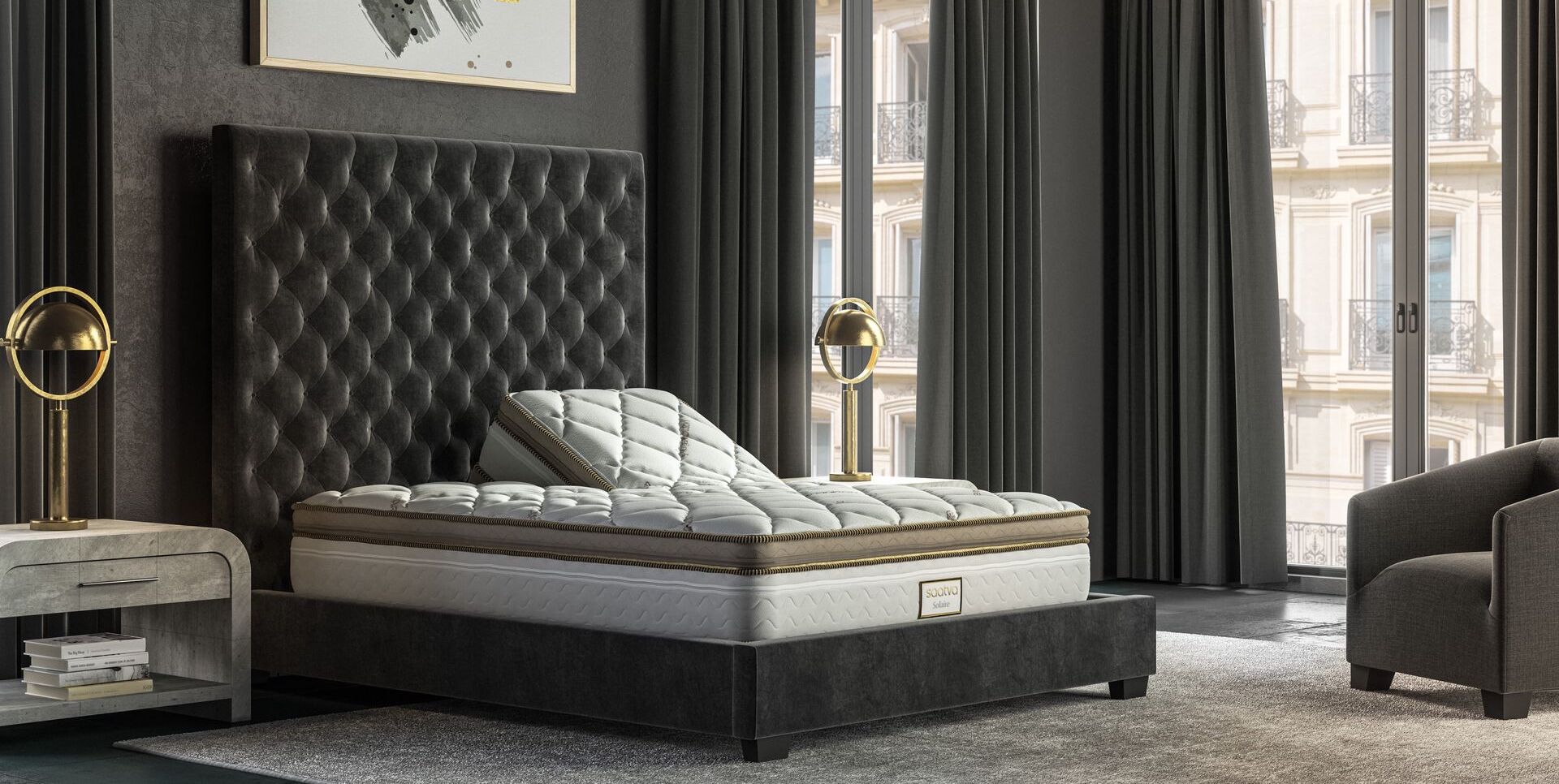
Our luxurious customizable mattress with 50 precise firmness options
are another great choice for hot sleepers. These mattresses contain individual air chambers that can be inflated or deflated to achieve a precise level of firmness. Adjustable mattresses are generally temperature neutral, meaning they don’t sleep hot.
Keep in mind adjustable mattresses are sometimes topped with a comfort layer made of foam. If you overheat at night, you’ll want to look for a comfort layer infused with cooling materials or one made of a naturally breathable material, like latex.
How to prevent overheating at night: pillows, sheets, and more
A cooling mattress is a big step toward comfortable sleep, but there are also other products you can use to prevent overheating at night.
Pillows
Like mattresses, the
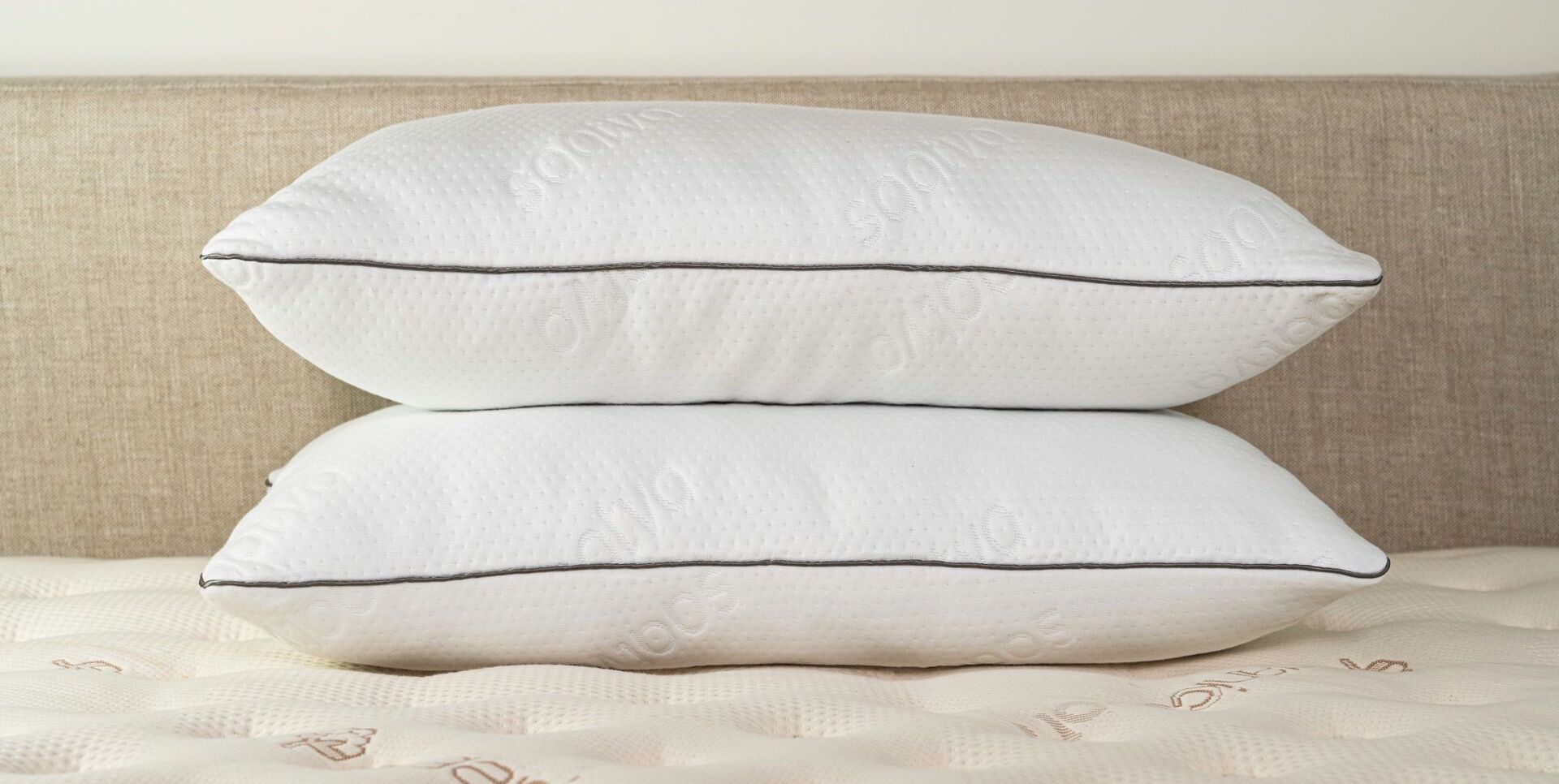
Cooling comfort and contouring support ideal for side sleepers
are made of latex or memory foam that’s been infused with a cooling agent (gel or graphite). Down pillows aren’t recommended for hot weather, as down tends to trap heat.
If you crave the cloud-like feeling of sleeping on down, go for a good quality
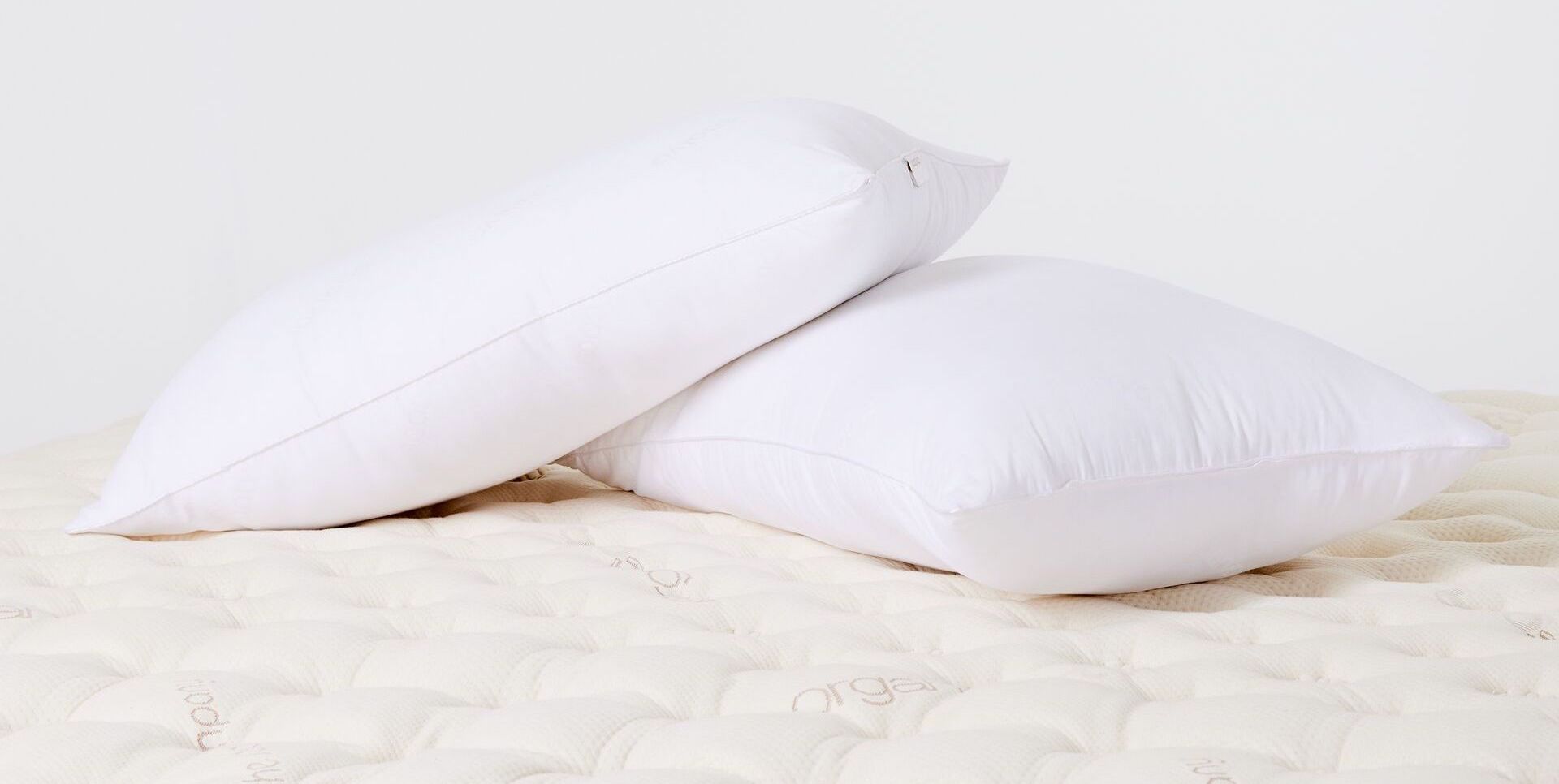
Hypoallergenic with a plush and airy feel that’s perfect for cuddling
These are pretty good at imitating the softness of down but don’t have down’s heat retention properties. Make sure your pillow comes with a cover made of a breathable fabric, such as organic cotton.
Sheets
When choosing sheets for the summer, stay away from synthetic materials such as microfiber or polyester sheets, which tend to trap heat rather than wick it away from your body. Go for natural breathable fabrics such as cotton, linen, bamboo, or lyocell.
When choosing cotton, look for sheets made of long-staple single-ply cotton with a thread count between 200 and 400 for optimal coolness while you snooze.
Mattress toppers
A
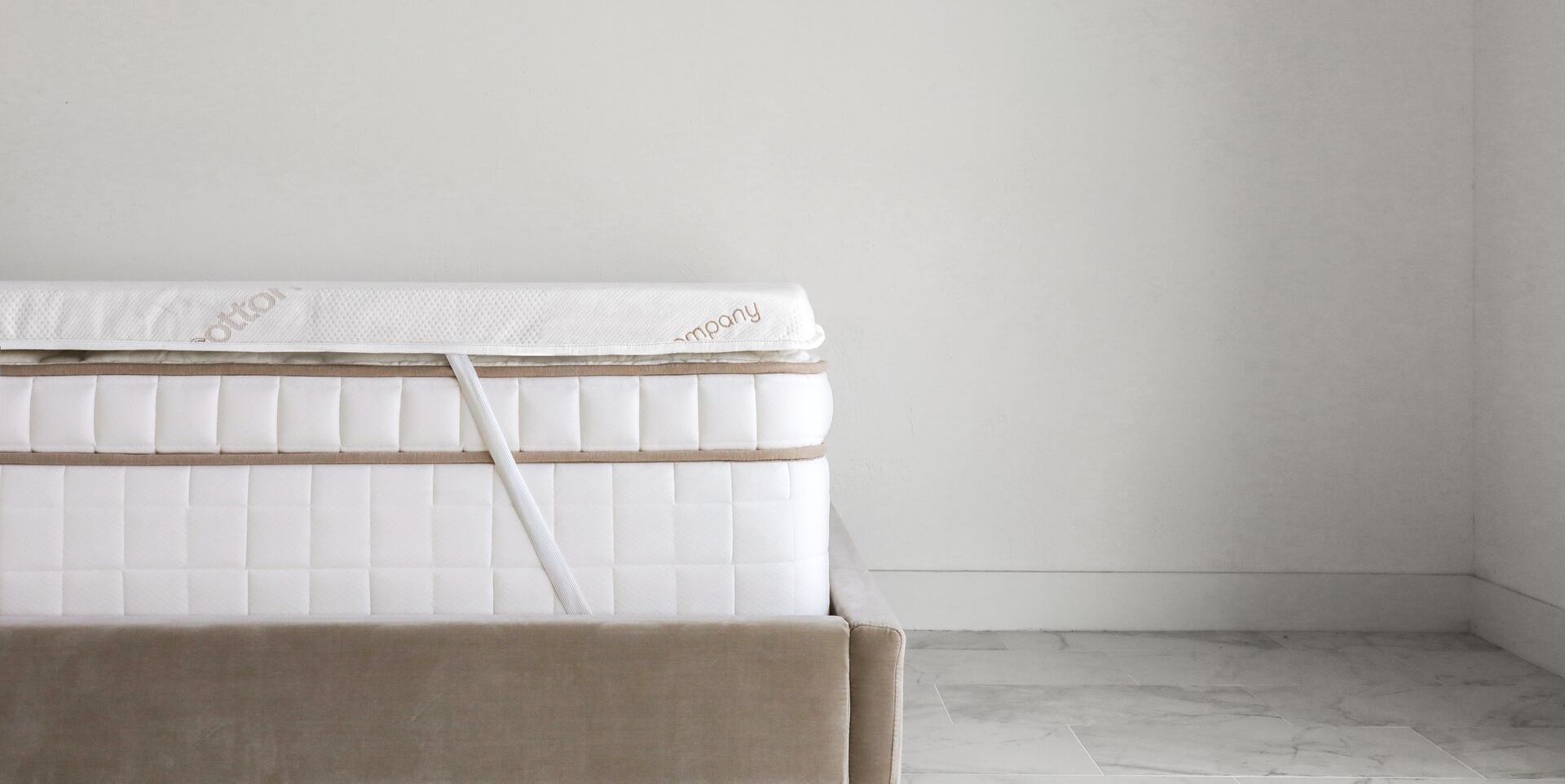
Body-hugging comfort with advanced cooling technology
is a piece of foam—usually 1 to 3 inches thick—designed to add instant comfort to your bed. Natural latex foam toppers offer excellent breathability, making them a solid choice if you want to ensure cool sleep.
If you prefer the feel of memory foam, look for a memory foam topper infused with high-tech materials, like cooling gel or graphite, that dissipate heat more effectively.
Fans, chill pads, and other gadgets
If you’re a really hot sleeper (or a person dealing with menopause), you can find mattress accessories like electric cooling pads, bed fans, and even water-cooled devices. (Here are the best products to keep you cool while sleeping.)
Lifestyle changes
While gadgets are great, don’t forget about simple, low-cost (or even free!) remedies: Getting plenty of fluids before you sleep, sleeping in the buff, turning on a ceiling fan, or temporarily moving to the lowest point in your home, where it’s generally cooler.
Frequently asked questions
Which type of mattress is best for summer?
The best summer mattress is one made from breathable materials that allow for ample airflow, such as an innerspring mattress, hybrid mattress, or latex mattress.
Traditional memory foam, on the other hand, retains heat, which means it might not be the ideal choice for summer. However, newer memory foam mattresses tend to feature high-tech cooling materials, like gel and graphite.
What is the best mattress for night sweats?
Also called “hyperhidrosis,” night sweats are experienced by as much as 12% of the general population. The best mattress for night sweats is one constructed with cooling in mind. Innerspring mattresses deliver excellent temperature control since they allow for plenty of air circulation between the coils.
Additionally, latex is a naturally breathable material that offers the contouring ability of memory foam without memory foam’s tendency to trap heat. Other cooling mattress materials to look for if you suffer from night sweats include cooling gel, graphite, and organic cotton.
Which mattress material cools best?
Here’s a rundown of some of the top mattress materials for cool sleep.
- Innerspring coils: Because of their open construction, innerspring coils are one of the best materials to look for in a mattress for cool sleep. The space between coils allows air to circulate around your body to prevent overheating at night.
- Natural latex: This material comes from the sap of the rubber tree and has a naturally open cell structure that allows for great airflow. It’s usually also perforated with pinholes at regular intervals, which increases its breathability. Keep in mind that synthetic latex isn’t as cool as natural latex.
- Cooling gel: This polymer, which is a general term for any number of naturally derived compounds, works by effectively soaking up the thermal energy from your body and dispersing it throughout the surface of the mattress. Gel is typically infused into memory foam or added as a layer near the surface to dissipate body heat.
- Graphite: This highly conductive form of carbon has been used to reduce heat in sensitive electronics for quite some time and has made its way more recently into mattresses, mattress toppers, and other sleep products. Graphite works as a cooling agent because, at a molecular level, it’s stacked uniformly with large areas of space for heat to dissipate between its carbon discs.
- Organic cotton: Cotton’s naturally porous structure makes it highly breathable, which is why it feels cool against your skin—and also why it’s the most popular material for mattress covers and other bedding products. While some synthetic fabrics have similar cooling capabilities, many are made using chemicals or chemical processes. Organic cotton, on the other hand, is grown without any synthetic chemicals or fertilizers. Sleeping in cotton as well as sleeping on cotton is also a great way to stay cool in hot weather.
Do gel mattresses keep you cool?
There’s no scientific evidence proving gel mattresses keep you cool. However, anecdotally, many people report that gel mattresses do a good job of keeping them cool while they sleep.
When shopping for a gel mattress, it’s best to choose a mattress company that offers a generous home trial so you can try the mattress at home and see if it works for you.
Which foam mattress is the coolest?
The coolest foam mattresses are ones infused with materials like cooling gel or graphite to dissipate heat. Natural latex foam also sleeps cool, as do hybrid mattresses that pair an innerspring base with a foam comfort layer infused with cooling materials.
Is there a cooling mattress topper?
A mattress topper isn’t just good at adding comfort to your bed. Depending on the materials it’s made of, it can also ensure a cool night’s sleep. A cooling mattress topper will be infused with a high-tech cooling material like graphite to draw heat away from the body. It will also be covered with a breathable material, like organic cotton, to wick away moisture.
Find a mattress that cools you down at Saatva
Whether you’re looking for a summer mattress that keeps you cool or you need cooling relief from night sweats, Saatva has you covered with a variety of cooling mattresses and bed accessories.
Check out our wide selection of high-quality mattresses made with breathable materials, like natural latex foam, gel-infused memory foam, and organic cotton. Then take our online mattress quiz to find out which one is best for you. All of our mattresses come with a 365-night home trial so you can try one out to see if it’s right for you.
We also offer a range of cooling bed accessories, including graphite toppers, cotton sheets, and latex pillows, to complete your sleep setup.


